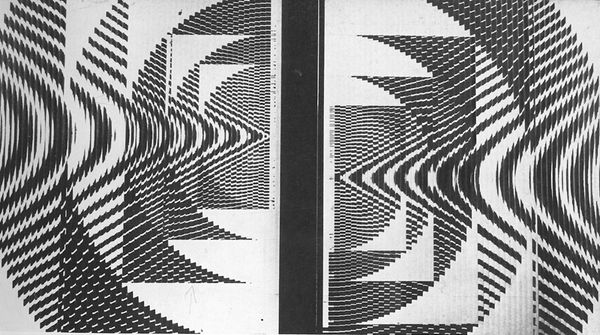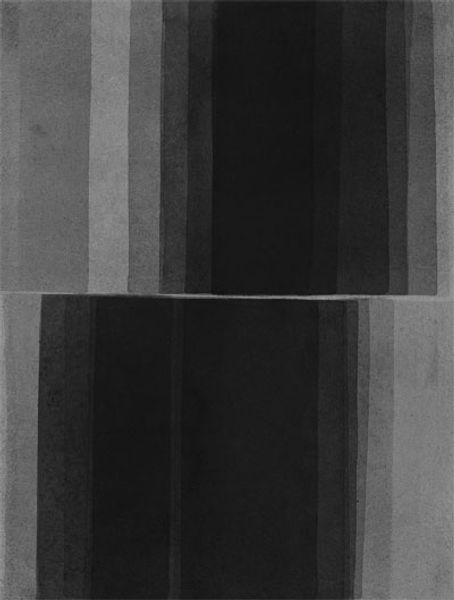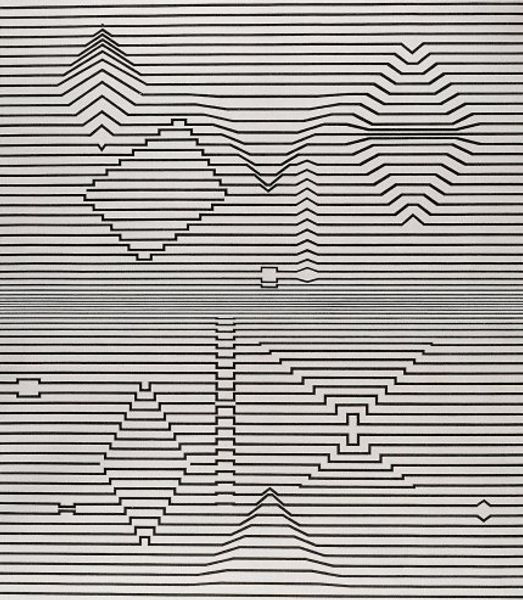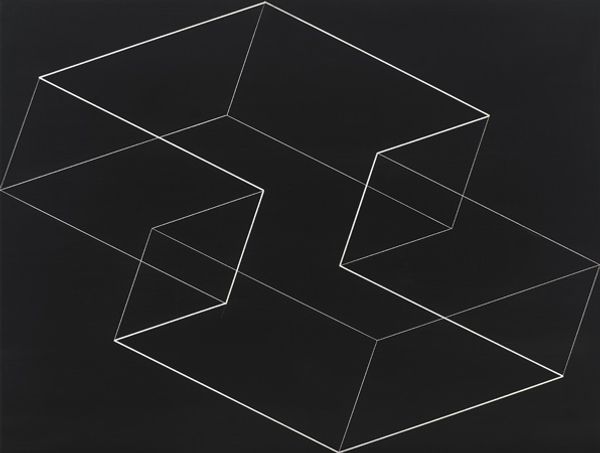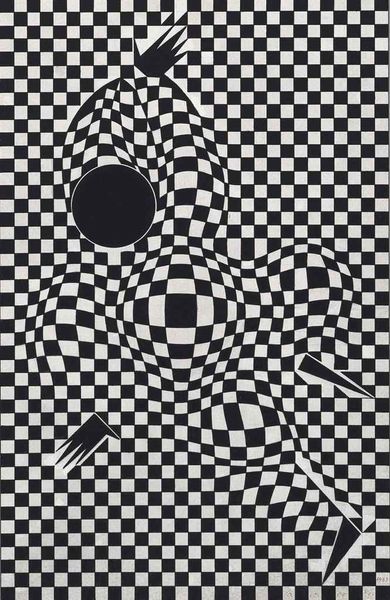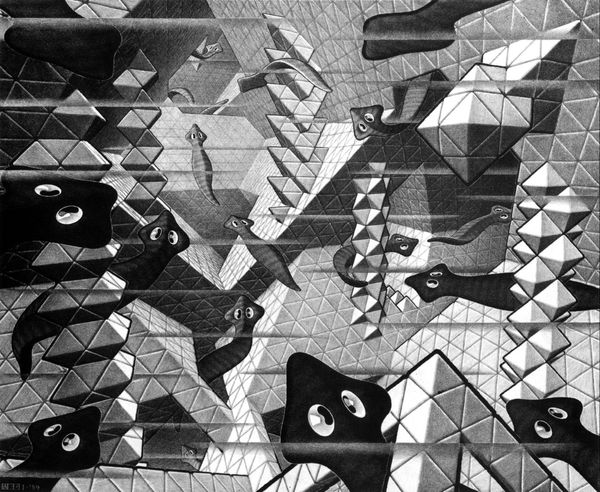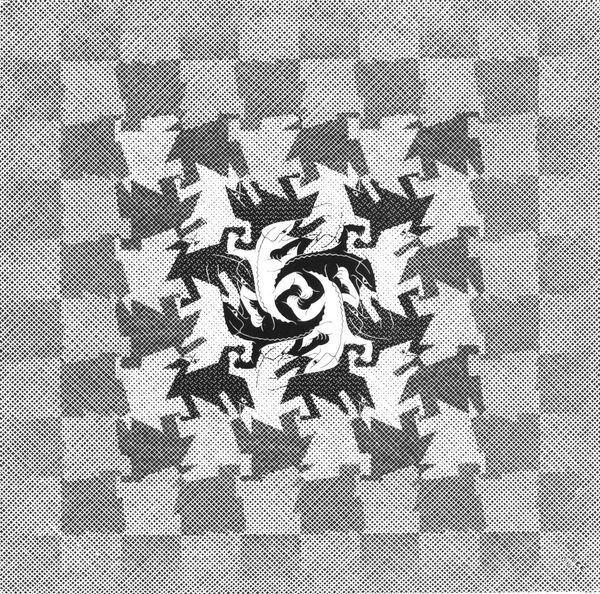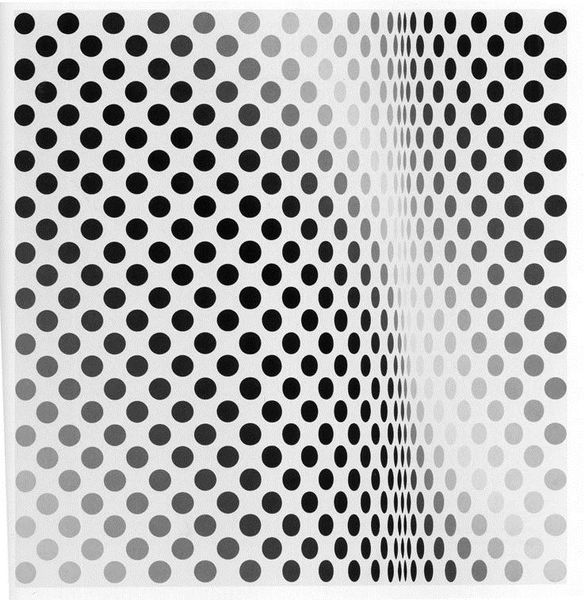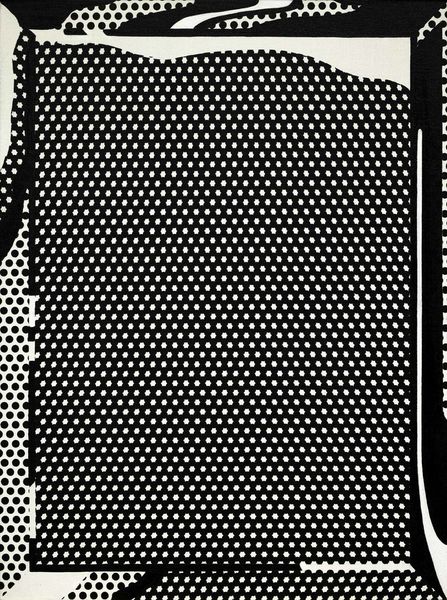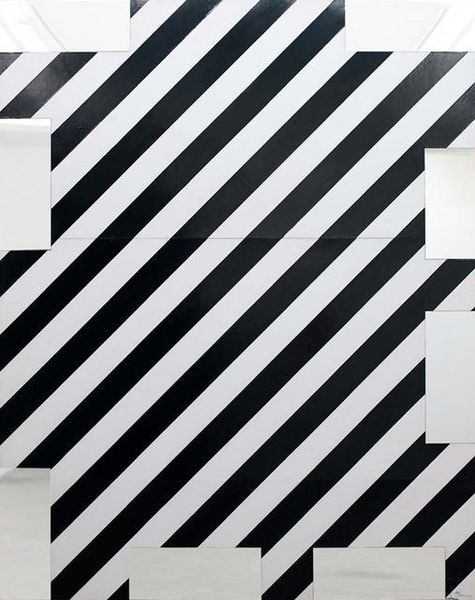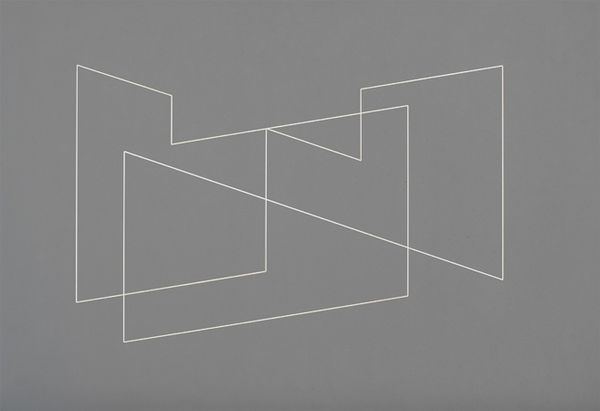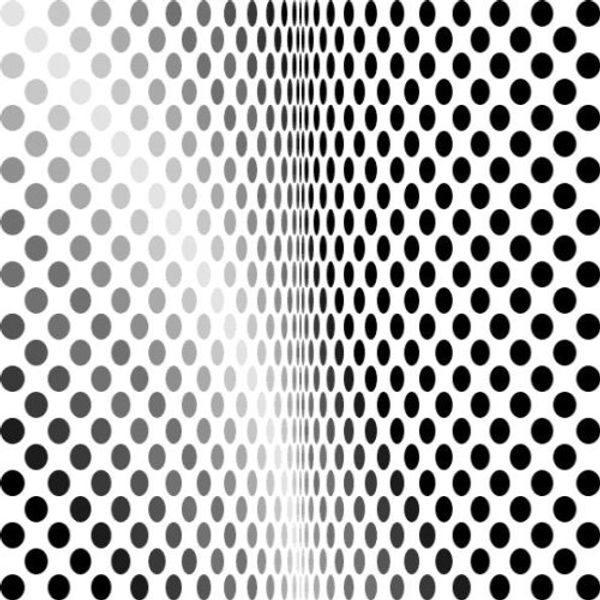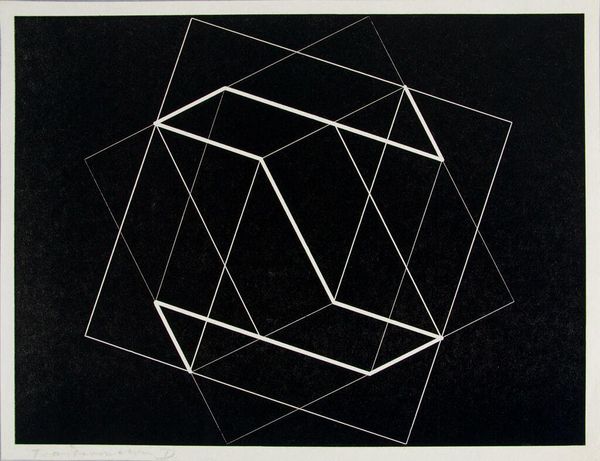
drawing, photography, graphite
#
drawing
#
op-art
#
conceptual-art
#
minimalism
#
pattern
#
geometric pattern
#
photography
#
abstract pattern
#
repetitive shape and pattern
#
minimal pattern
#
geometric
#
geometric-abstraction
#
repetition of pattern
#
vertical pattern
#
graphite
#
monochrome
Copyright: Florin Maxa,Fair Use
Curator: Here we have Florin Maxa’s “Combinatory System” from 1973. It appears to be a work on paper, probably graphite, or perhaps even a photographic process, judging by the tonal range and detail. Editor: It's mesmerizing. The interplay of light and shadow creates an illusion of depth that is simultaneously appealing and a bit unsettling. It looks like some futuristic Tetris blocks. Curator: Absolutely. Given the context of the early 70's, one might see this piece, which blends the principles of Op Art and Conceptual Art, as a response to the rise of information theory and systems thinking. These were prominent in architectural discourse at the time, in which the artist appears to have been engaged. Editor: I am fascinated by that one anomalous cube at the base—covered not in the sharp lines and geometrical shapes as the others, but by something granular, textured, organic. What does that signify, do you think? It’s such a break from the cold geometry dominating the rest of the drawing. Curator: I see it as a poignant counterpoint. It could symbolize the intrusion of the real, imperfect world into a space defined by abstract ideals. Consider too the political turmoil in Romania at the time—this piece might subtly interrogate systems that suppress individuality. It definitely begs the questions of whether complete order can ever exist or if it’s desirable. Editor: Yes, and who or what defines the organizing principle and benefits from it. It almost makes me feel claustrophobic, like I am caught within a structure where any deviation is treated as an imperfection. Curator: I think you hit upon something important. While the work does appear minimalist on the surface, its underlying complexity and conceptual underpinnings prompt crucial questions about power, control, and the place of the individual within larger systems. Editor: Thanks, I am glad to consider that in connection to my reading of this intriguing piece. Curator: The social role of art in challenging dominant ideologies, and also aesthetic codes, feels very present here. I find "Combinatory System" so successful at generating further questions that resonate powerfully today.
Comments
No comments
Be the first to comment and join the conversation on the ultimate creative platform.

